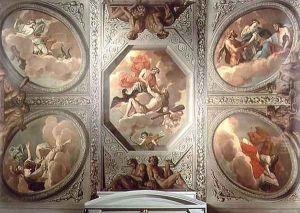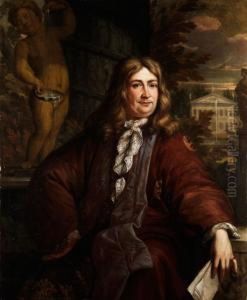Theodorus van der Schuer Paintings
Theodorus van der Schuer was a Dutch artist born in 1634 in 's-Hertogenbosch, the Netherlands. His artistic career blossomed during the Dutch Golden Age, a period in the 17th century when the Dutch Republic was particularly prosperous and witnessed a remarkable flourishing in the arts and sciences. Not much is known about his early life and training, but it is believed that he may have been influenced by the prominent artists of his time, possibly studying under some of the local masters in 's-Hertogenbosch before moving to further his career.
Van der Schuer's work is characterized by the baroque style that was dominant in European art during his lifetime. This style is known for its emphasis on movement, detail, and sensuality. He worked on various artistic projects including painting, engraving, and creating tapestry designs. His oeuvre includes portraits, religious scenes, and allegorical works that were typical of the era.
In 1668, van der Schuer moved to Leiden, where he became a member of the Leiden Guild of St. Luke, an association of painters. His membership in the guild indicates that he was a recognized and respected artist at the time. While in Leiden, he likely interacted with other Dutch painters and scholars, contributing to the vibrant cultural life of the city.
Theodorus van der Schuer's work, though not as widely known today as that of some of his contemporaries, reflects the skill and artistic values of the Dutch Golden Age. He continued to work and live in Leiden until his death in 1707. Despite the limited recognition he receives in the present day, his contributions to the Dutch artistic heritage of the 17th century remain a testament to the era's rich and diverse artistic production.

